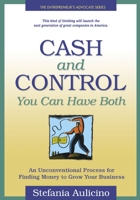Ever seen a company that is perennially in the “fund raising mode”? Why is that?
Any business is naturally a profit making endeavor: you have a solution that is of value to a set of customers, you price it to cover your costs and end up with a profit. So that is the problem?
True, many business models are dependent upon a scale issue. Serving one customer is different than serving a market full of customers. Scale requires an investment in infrastructure including rent, marketing, on-going product development, product-delivery on a mass scale etc.
The challenge of building infrastructure is that you must invest in it before you are rewarded with the increased revenue that your infrastructure is designed to support. Scaling a business is made up of 2 elements: building the infrastructure and funding the timing gap.
The timing gap – before revenue synchronizes with expenses to yield the profit you designed into the model- is the place where many companies let themselves become equity addicts. It seems like its necessary to get outside funding, so they do, and then, it becomes an addiction.
Actually, most of your infrastructure (such as raw materials, production, even marketing) can be funded with non equity sources- for the asking- when it comes from sources who stand to benefit from your company’s success. And when you reach out to such non equity sources, your growth will be safer. The most valuable source of funding for any company is customers, and after that vendors. Involving customers and vendors also delivers a market discipline, which ensures that any growth is market-supported.
Customers, voting with their purchase dollars, will prevent you from adding features that are not valued, or otherwise going in directions that will not increase your revenue stream. And when you are delivering solutions to resolve the customer’s pain, customers will be happy to offer you more than revenue dollars. It’s not unusual to receive advance payments to fund production; or for customers to act as an extension of your sales force encouraging peers to buy, because your solution is so important to them. Even outright gifts- no strings attached are possible. Vendors can do the same thing plus offer you breathing room with deferred payments much in excess of traditional trade credit- even 270 days or more. Used properly, you can create a mosaic of different small pieces from different sources, which together make up your unique financing solution for all your know expenses.
Unfortunately, companies that use “OPM” (other people’s money) lose that powerful feedback mechanism. That’s why it’s so dangerous to get your business into the equity addiction.
Yes, you will need some equity, but sharing your future with participants who will benefit from your success will limit the amount of equity you really need. Equity should only be applied where nothing else will do.
Now you can limit your need of equity for just that timing gap-the unknown of how long will it take for the market at large to accept a new product or service. Just like the unknowns in your family life, the only way to deal with the unknowns is a safety net. Family’s have “emergency cash reserve” to address the unexpected. Your company deserves a safety net also- which, like your family cash reserve, must be liquid. That is the proper use of equity. Now you need never be an equity addict.
Stefania Aulicino is founder president of CapitalLInkUSA. For 20 years Stefania has helped business builders uncover the right capital for their optimum growth strategy so you get cash and keep control to build the business you really want. www.CapitalLinkUSA.com

